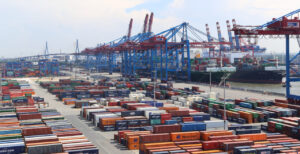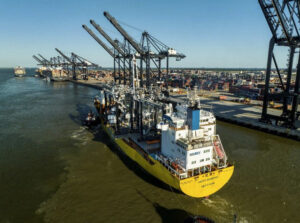In 1894, Queen Victoria officially opened the Manchester Shipping Canal. Despite being located 40 miles inland, the canal allowed the Port of Manchester to establish itself as the third busiest port in Britain. Changes to shipping methods and the growth of containerisation during the 1970s and ‘80s ultimately resulted in the closure of the terminal docks at Salford.
Now, Peel Ports are looking to build on the historic successes of the Manchester shipping canal and give the original river route a new lease of life.
The proposed project is an expansion plan for the Port of Salford that will make it the UK’s first tri-modal (rail, road, sea) inland facility. The development will be located on the banks of the Manchester Shipping Canal at Barton-Upon-Irwell and is set to cost USD $169 million (£138 million).
Port Salford will provide a central North West distribution base to improve supply chains for businesses across the North West. It will enable direct barge access to the river terminal at the Port of Liverpool and will reduce the environmental impact of the terminal's expansion by reducing freight levels on road.
Terminal operations at the existing distribution park are set to begin at the end of 2017, with long term aims to boost capacity at the Port of Salford from 8,000 containers a year to 100,000 by 2030. These ambitious plans are in line with Peel Ports ‘Atlantic Gateway’ vision that will look to combine the Port of Liverpool with the Manchester Ship Canal.
Last year (2016), Peel Ports successfully launched the new container terminal Liverpool2 at the Port of Liverpool.









